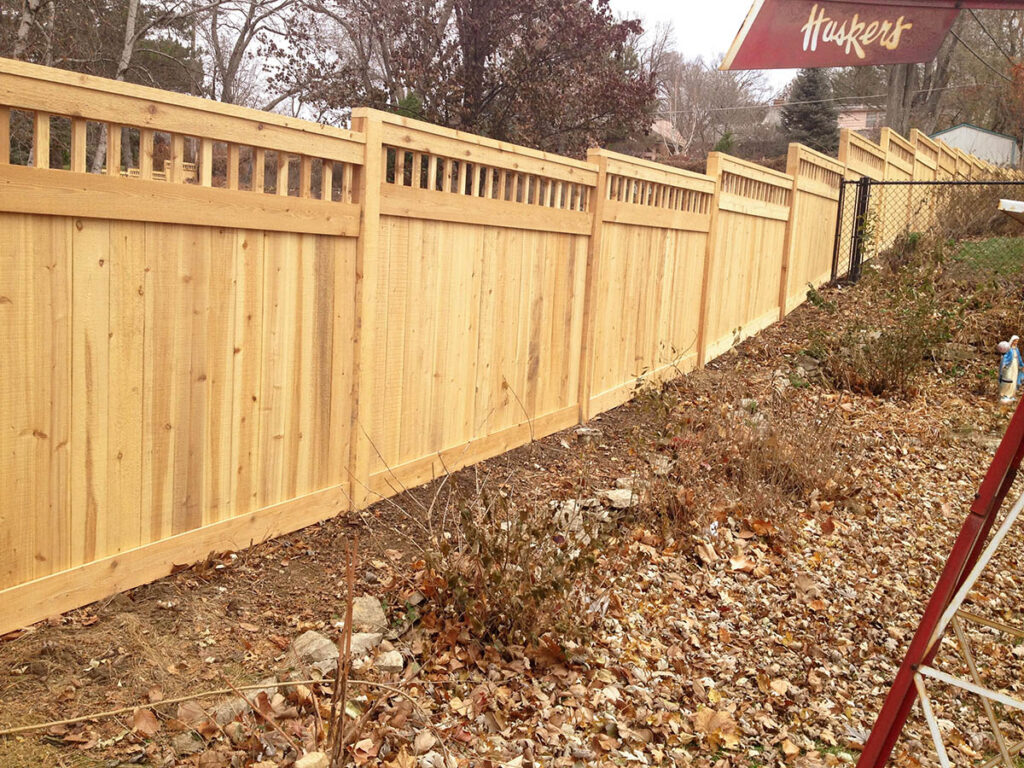Wood Fence Maintenance Tips
Avoid Rot and Seasonal Damage to Your Wood Fence with Easy Maintenance Tips
In the early days of marking property boundaries/security perimeters, the most common material used in fence construction was lumber. Despite the later proliferation of other materials—such as metal and vinyl—wood fencing remains a staple nationwide. These days, it comes in a broad spectrum of styles: from solid privacy to elegant shadowbox to charmingly old-fashioned picket fencing. And as the nation’s leading fence company, we specialize in fences suitable for residential and commercial customers alike. Of course, as an organic material, wood requires special treatment to last. Here are the essential tips for wood fence maintenance.
1. Staining Your Wood Fence
You’ve no doubt noticed that—in the aftermath of winter—wood fences tend to be disfigured by split rails, cracked posts, and bulging knots. The timing is not coincidence. Because wood is a natural, organic material derived from trees, it maintains absorptive qualities even after the tree’s death. As such, it’s receptive to water, readily soaking in rainwater, melting snow, sprinkler water, etc. Although no longer able to process the water into nutrients, it continues to hold all these fluids. Then, when winter descends and the temperature drops into subzero territory, the liquids solidify, turning into ice. Now a physical entity, the expanding ice pushes against the interior of your fence parts.
So, how can you go about preventing this? Within six weeks of installing your fence, consider sealing it with paint and stain. Doing so provides a fine layer of coating that helps prevent water from soaking through your fence parts’ surface. Do note that staining is a very unpredictable and messy practice best placed in the hands of a qualified staining contractor. It should likewise be conducted only on calm, dry, windless days and with the best equipment. Ask your contractor if they apply staining through the spray technique, as this yields the best results—when the operator knows what he’s doing—especially when followed up with a brush stain.
2. Location, Location, Location
Wood fences located in constantly dark areas—such as under trees and in the shadow of land formations—frequently experience rotting. After all, areas such as these do not receive regular sunlight. As a result, moisture accumulates and doesn’t so quickly evaporate. If you need a fence in these areas, consider alternative materials such as vinyl. This is an inorganic, non-absorptive material completely resistant to water and rot.
Also, plants that come in contact with your fence can lead to mold and other damage. It’s best to keep your foliage maintained so that it remains physically separate from your fencing.
American Fence Company has built, installed, and repaired wood fencing for 56 years! As such, we’ve accumulated unsurpassed knowledge and made learning it an essential part of our fence education system. Our installers undergo comprehensive training in everything related to wood fences. At this moment, we’re crawling out of the cold winter months, so unstained/unpainted fences are likely now marred by cracks and knots. Contact our sales team today, and ask about repairs and replacements. Thinking about installing a wood fence? Consider what we talked about above, and check out the fence drawing tool! Available on all of our branch websites, you can use this interactive tool to draw on a Google Maps view of your property. You also have the option of drawing on a blank canvas, using symbols to mark the position of trees and foliage.

